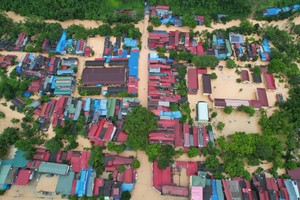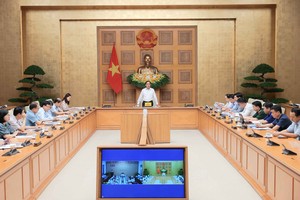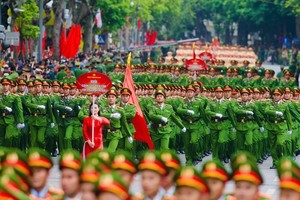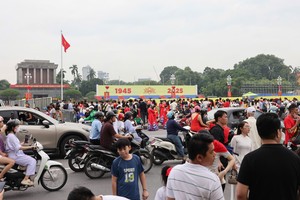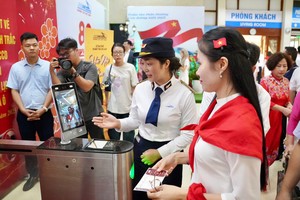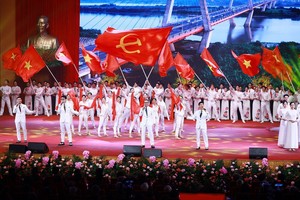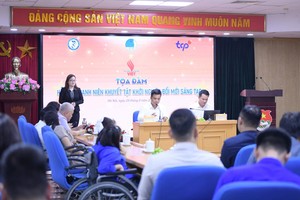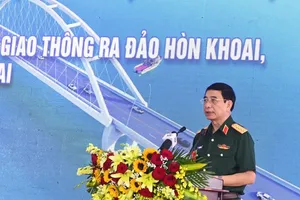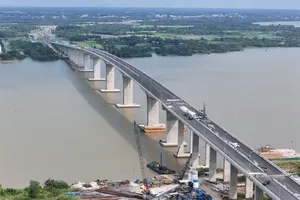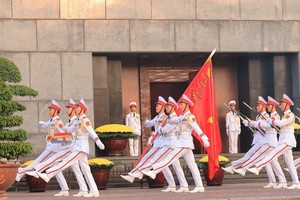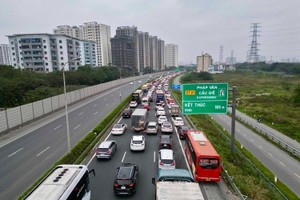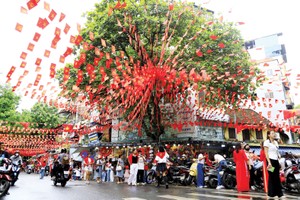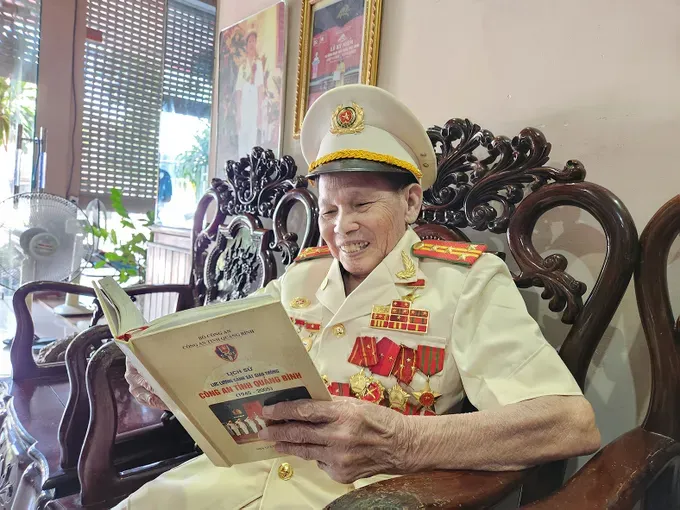
Heroes forged by people
In the scorching August heat of Quang Tri Province, Colonel and Hero of the Armed Forces Nguyen Tri Phuong, former Deputy Director of the Quang Binh Province Department of Public Security, unfurls the layers of memory from more than half a century ago. They were days defined by a rain of bombs and a storm of bullets, as this narrow strip of land in Central Vietnam became the target of a frantic sabotage campaign by the US and the Saigon regime.
Quang Binh was the “windpipe” of the nation – a strategic chokepoint for security, a hub for military communications, and the nexus of the supply routes heading south. From 1961, the enemy relentlessly inserted spy and commando teams by land, air, and sea. The maritime front was particularly vicious, with teams of sea commandos and frogmen trained directly by the CIA and the US Navy to destroy bridges, ports, and naval vessels.
As a young police officer in the coastal commune of Thanh Trach, Nguyen Tri Phuong understood that the enemy’s goal was not just to destroy infrastructure but to infiltrate and build a network among the populace. He tirelessly urged his neighbors to maintain the highest level of vigilance, believing that a thousand pairs of eyes would be the most effective “radar”. Every night, he and three militiamen would patrol the edge of the Gianh Port, their eyes fixed on the dark sea.
One moonless night, their vigilance paid off. A large ship anchored offshore, deploying a rubber boat with four commandos tasked with destroying a nearby bridge. In the darkness, Phuong spotted them. “Hands up!” he yelled. The commandos scattered. After a brief chase and a firefight, two were killed, and the other two were captured alive by civilians.
After the 1964 Gulf of Tonkin incident, North Vietnamese naval vessels were moved to concealed positions up the Gianh River. At this time, only air defense forces protected the military port and a part of the navy at Khe Nuoc Bridge. But the enemy found them.
On April 28, 1965, a massive air raid involving 80 aircraft sorties relentlessly pounded their location, destroying five ships. Local forces fought back heroically, downing five enemy planes. Amid the carnage, Phuong and his comrades braved the bombardment to rescue wounded sailors before their ships exploded. “I am an ordinary man”, he recalled, “but somehow, with a strange strength, I hoisted each wounded man onto my shoulders and ran them to the boats.”
Throughout the period from 1961 to 1970, Quang Binh not only fought against the enemy’s bombs and bullets but also steadfastly combated against spies and commandos, firmly protecting the security of the sea region. In 1963 alone, the enemy launched over ten sea commando teams into the area. But all were defeated by the people and security forces.
A key victory came on the night of June 29, 1962. A commando team dispatched from Da Nang City attempted to mine the Gianh naval base. A frogman was wounded by his own explosive. In the ensuing pursuit, the revolutionary forces captured the enemy’s mother ship anchored near the 17th parallel and 11 commandos. The intelligence gathered from these captives was a major coup, revealing enemy operational plans and dealing a humiliating blow to the CIA.
Strength of the people
The relentless attacks did not break the spirit of the people of Quang Binh Province. Often, commando teams would see the silhouettes of waiting citizens and police on the shore and hastily retreat. Starving agents hiding in the countryside were sometimes fed by villagers before being turned over to the authorities.
The enemy also resorted to kidnapping fishermen at sea to extract intelligence or coerce them into becoming spies. But the fishermen would report these encounters the moment they returned to shore, allowing the revolutionary forces to grasp the situation and set elaborate traps, or “lures”, to capture the enemy agents.
Having risen through the ranks from a commune officer to the Deputy Director of the Quang Binh Province Public Security Department, Colonel Nguyen Tri Phuong has a profound understanding of the strength of the people in the fight against spies and commandos as well as throughout the long war of national salvation.
“The vigilance of the people and the local police was the absolute key to preventing sabotage and maintaining internal stability”, he shared, his voice filled with emotion. “The people’s movement to protect security unleashed the innate strength of our nation and contributed to our final victory.”
Major General Nguyen Huu Hop, former Director of the provincial Department of Public Security, echoed this sentiment. “On this front of preventing, fighting, and hunting down spies and commandos, every citizen was a shock trooper, and every village a fortress. This is a struggle that mobilizes the combined fighting strength of the entire Party, the entire people, and the entire army, in which the People’s Public Security is the leading advisory and core force”, he said.
Over a decade against the American imperialists, the security forces in Quang Binh Province captured 17 spy and commando teams that had infiltrated by air and sea. Using clever “luring” tactics, the revolutionary forces would often bait the enemy into sending resupply missions, only to lie in wait and capture the new teams. For ten years, the security of this fiery coast held firm, safeguarding the nation’s vital lifeline to the South.
According to declassified CIA documents, from early 1961, the CIA directed a campaign of surprise attacks against North Vietnam’s coast. The plan, overseen by maritime sabotage expert Tucker Gougelman, initially involved covert operations to avoid direct conflict.
By 1962, these efforts intensified dramatically. Republic of Vietnam commandos, trained by US Navy SEALs, received upgraded equipment, progressing from outdated motorboats to armed Torpedo and modern “Nasty” class patrol boats.
Operating between the 17th and 21st parallels, these teams executed a wide range of missions, including interdicting supply vessels, sabotaging coastal targets, and inserting spies. All of these high-stakes maritime commando operations were carried out by commandos and frogmen from the Republic of Vietnam.
